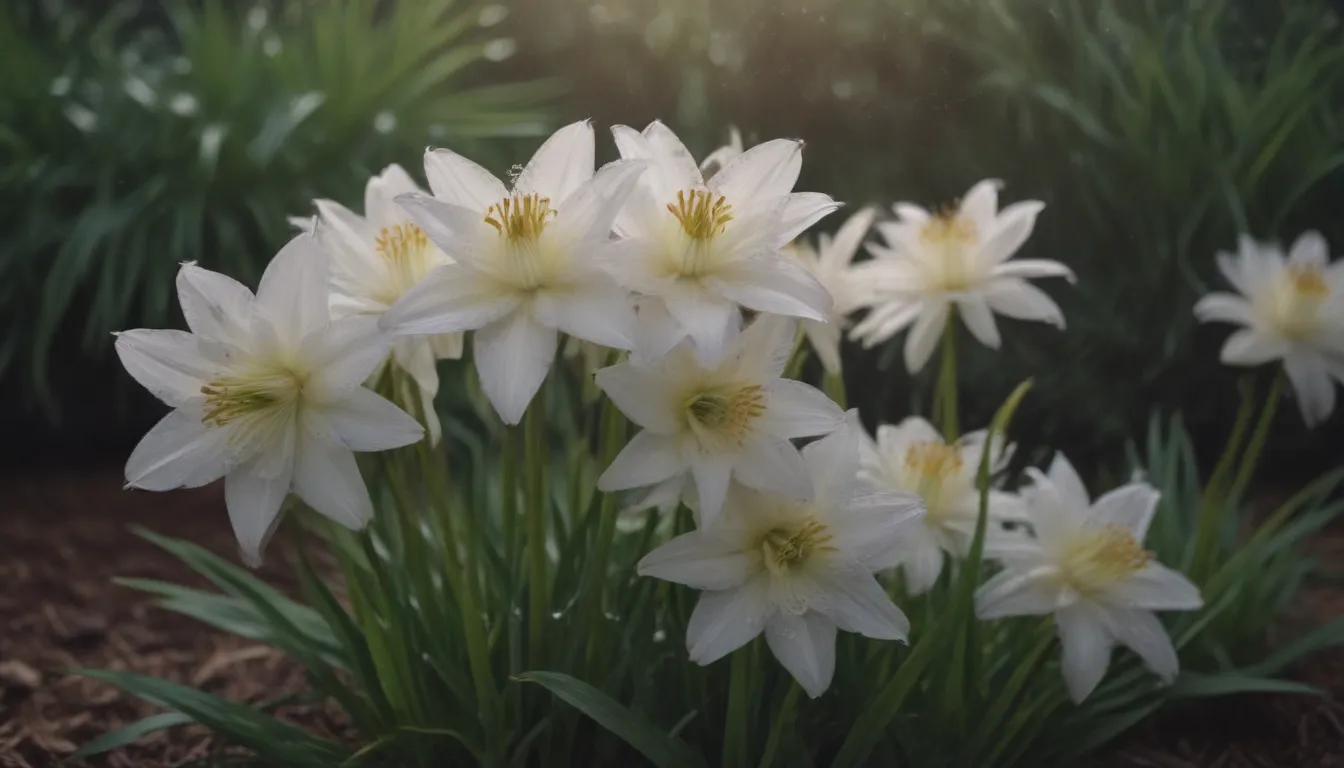Your Complete Guide to Growing and Caring for Rain Lilies

Are you ready to add a touch of whimsy to your garden with the charming rain lily (Zephyranthes candida)? Often mistaken for a crocus due to its petite size and shape, this delightful flower goes by many names, including fairy lily and zephyr flower. Known for its tendency to bloom after a rainfall, the rain lily is a resilient warm-climate bulb that can thrive with minimal care. However, it’s important to note that like many other lilies, rain lilies may be toxic to both people and pets.
Understanding Rain Lily Care
Once you’ve welcomed these lovable flowers into your garden, caring for them is a breeze. Here are the essential guidelines to ensure your rain lilies flourish:
Light
- Choose a sunny spot for your rain lilies, as they thrive in full sun. However, they can also tolerate some dappled shade or afternoon shade, especially in hot climates.
Soil
- Rain lilies prefer average to rich garden soil and are adaptable to various drainage conditions. Whether your garden soil is boggy or sandy, these bulbs are up for the challenge.
Water
- While rain lilies can withstand periods of drought, their blooms will only appear after a good summer soaking. Consider irrigating your flowers during dry spells to encourage flowering.
Temperature and Humidity
- Rain lilies thrive in warm, humid environments. If you’re in a colder climate, growing them in containers can provide the ideal conditions for these charming plants.
Fertilizer
- Rain lilies generally do not require fertilization. However, if you’re planting them in heavy clay soil, consider spreading a layer of compost before they emerge in the spring.
Exploring Different Types of Rain Lilies
While white and pink rain lilies are the most common varieties, there are numerous named cultivars that can add a splash of color to your garden. Explore options like ‘Abacos Apricot’, ‘Bangkok Peach’, and ‘Midas Touch’ to create a vibrant floral display.
Pruning and Beyond
-
Rain lily foliage is primarily evergreen, and you can trim it back without causing harm to the plants. These flowers will spread and multiply on their own, making them a welcome addition to any garden.
-
When potting rain lilies, ensure the bulbs are covered with an inch of soil, and plant them closer together in containers to create a lush display. In colder climates, remember to dig up the bulbs in the fall and store them indoors to protect them from frost.
Encouraging Blooms and Care Tips
-
Rain lilies typically bloom throughout the summer and into the fall, with individual flowers lasting a few days. To encourage more blooms, ensure proper planting depth and spacing, adequate sunlight, and avoid over-fertilizing or cutting the foliage prematurely.
-
After flowers have bloomed, trim them back to allow the bulb to produce more flowers. Deadhead spent flowers to promote re-flowering and keep your garden looking vibrant.
Adding Rain Lilies to Your Garden
Rain lilies make a lovely addition to any garden, whether in pots or in the ground. Consider planting them alongside other flowers like crinum lilies, spider lilies, daffodils, snowdrops, and St. John’s lilies for a diverse floral display. Remember to provide ample sunlight for optimal blooming, especially if you decide to grow them indoors.
In conclusion, rain lilies are perennial beauties that can bring joy year after year with their delicate blooms. By following these care tips and guidelines, you can cultivate a stunning garden filled with the enchanting allure of rain lilies. Embrace the magic of these fairy-like flowers and watch as they brighten up your outdoor space with their timeless charm!





